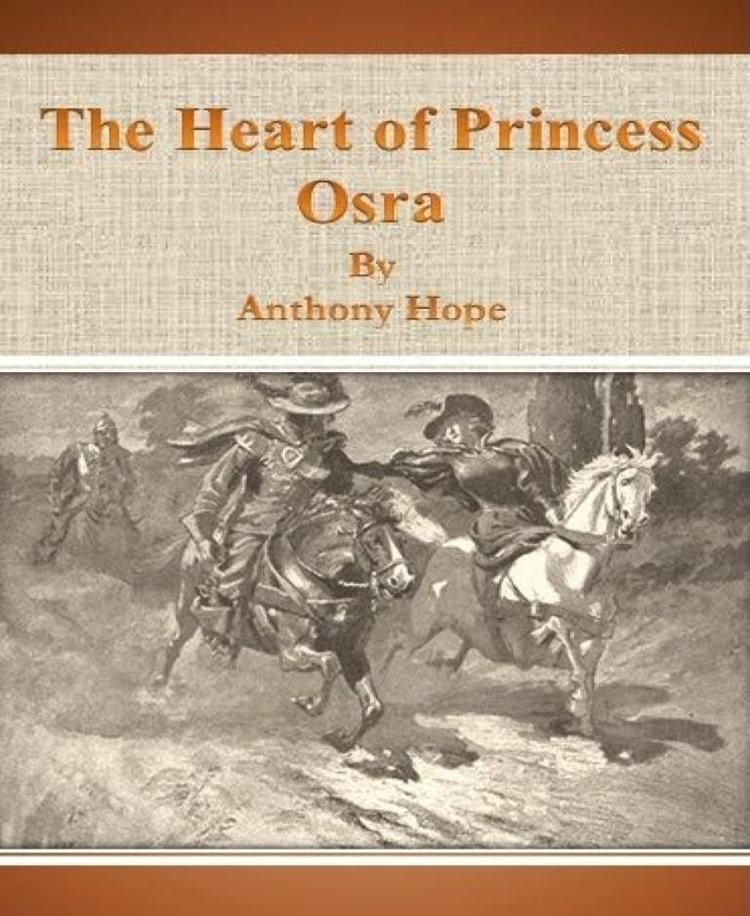7.2 /10 1 Votes7.2
Language English Pages 301 pp | 3.6/5 Goodreads Publication date 1896 Originally published 1896 Genre Historical Fiction Country United Kingdom | |||||||||||||||||||||||||||||||||
 | ||||||||||||||||||||||||||||||||||
Similar Anthony Hope books, Fiction books | ||||||||||||||||||||||||||||||||||
The Heart of Princess Osra is part of Anthony Hope's trilogy of novels set in the fictional country of Ruritania and which spawned the genre of Ruritanian romance. This collection of linked short stories is a prequel: it was written immediately after the success of The Prisoner of Zenda and was published in 1896, but is set in the 1730s, well over a century before the events of Zenda and its sequel, Rupert of Hentzau. The stories deal with the love life of Princess Osra, younger sister of Rudolf III, the shared ancestor of Rudolf Rassendyll, the English gentleman who acts as political decoy in The Prisoner of Zenda, and Rudolph V of the House of Elphberg, the absolute monarch of that Germanic kingdom.
Literary scholar Shoshana Milgram Knapp has observed that Hope's stories in the volume are both analytic of and acclamatory toward the inspiration of romantic love:
"Osra’s physical beauty is a metaphor for spiritual beauty. Her name, the feminine form of "Osric," is not an invention, but it is sufficiently unusual to suggest that the character is herself extraordinary, separated from life’s routine. Who will best love Osra? He who best knows her, and matches her. In Ruritania, love is the appreciation of the beloved’s uniqueness, accompanied by the commitment to rise to one’s best. And because Osra is not merely a prize to be valued, but a human being capable of valuing, she herself can learn what her suitors learn: that romantic love inspires extraordinary action.
"The nine individual stories follow a pattern. A man meets Princess Osra, and immediately develops a consuming romantic passion for this extraordinary woman. In loyalty to his value, he performs an extraordinary act of courage, ingenuity, or passion. He does not act in order to win the princess’s affection, or to prove to her his worth. He performs his act, in most cases, without expecting Osra to recognize his deed, much less acknowledge or reward it. Sooner or later, Osra does in fact recognize and acknowledge the act; she does not, however, requite the love that inspired it."
The Heart of Princess Osra is not as memorable as the other two components of the trilogy, but it expands and deepens the fictional world Hope created. The narrative may seem sentimental and insubstantial to the modern reader, but it is of a style common in Victorian literature.
This volume covers some of the historical background of Ruritania, giving additional information which may aid in the enjoyment of the two full-length novels. For example, the role of Albert von Lauengram in Black Michael's conspiracy is illuminated when one learns that he was descended from Rudolf III's younger brother. A passing reference to the burning of the White Palace in 1848, and thus the conclusion that there was an 1848 Revolution in Ruritania, as elsewhere throughout Europe, highlights the social and political divisions described in the other works.
